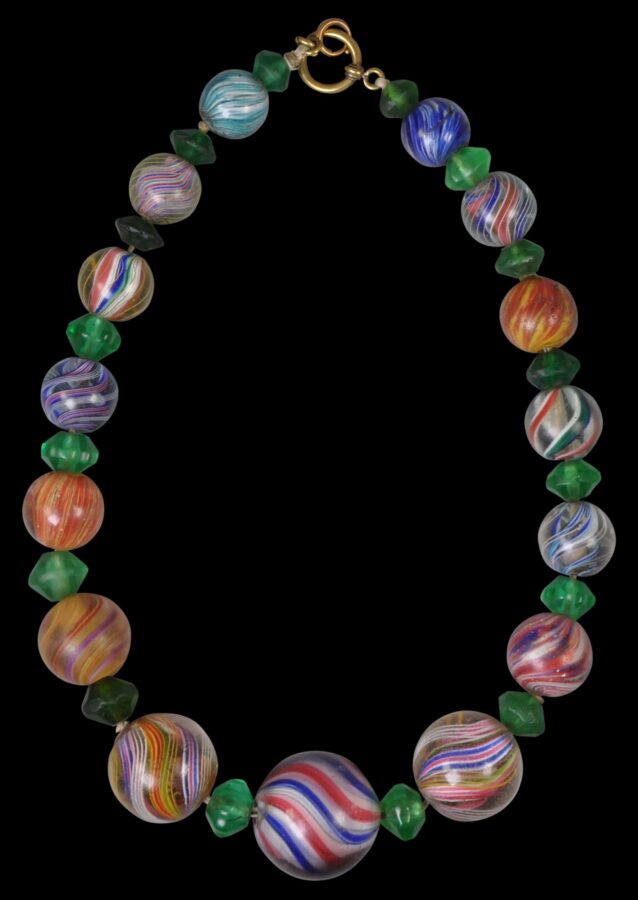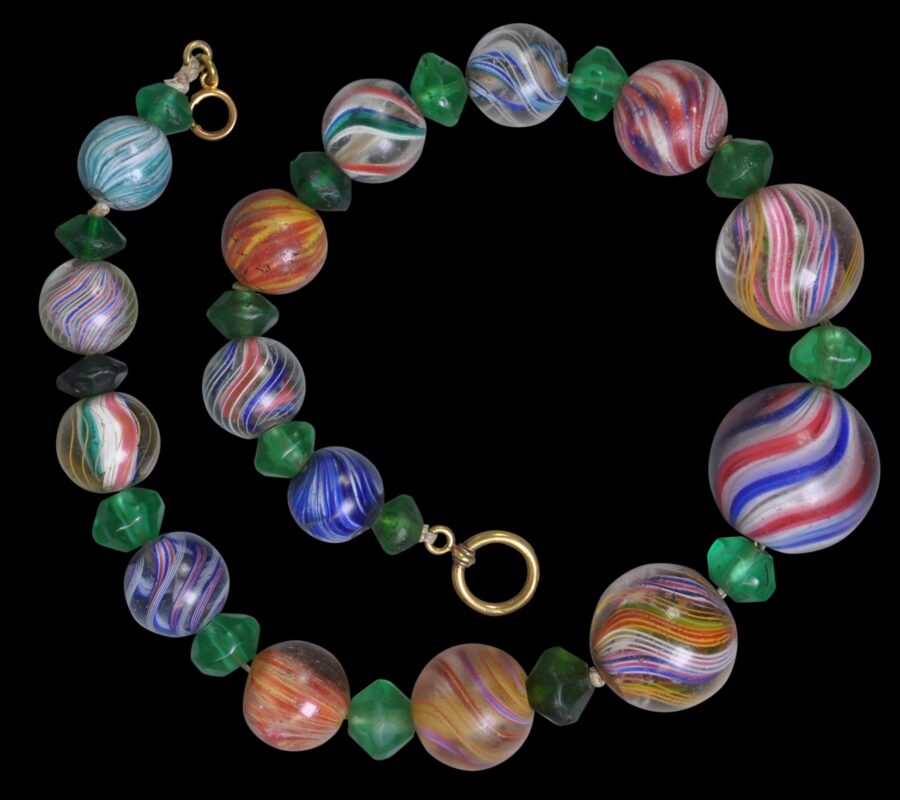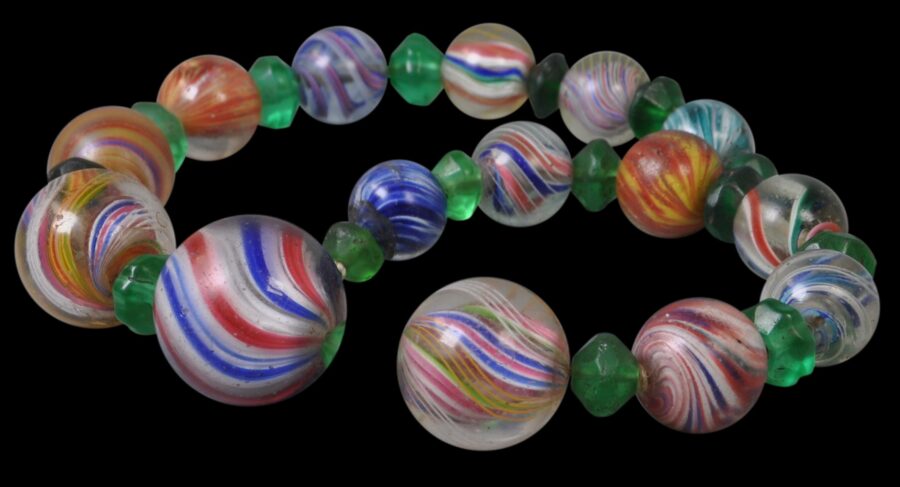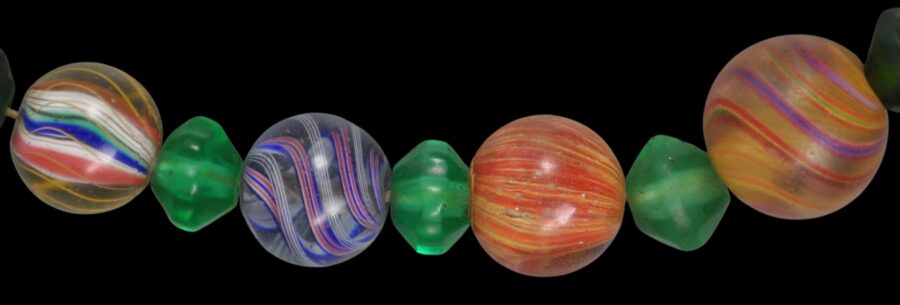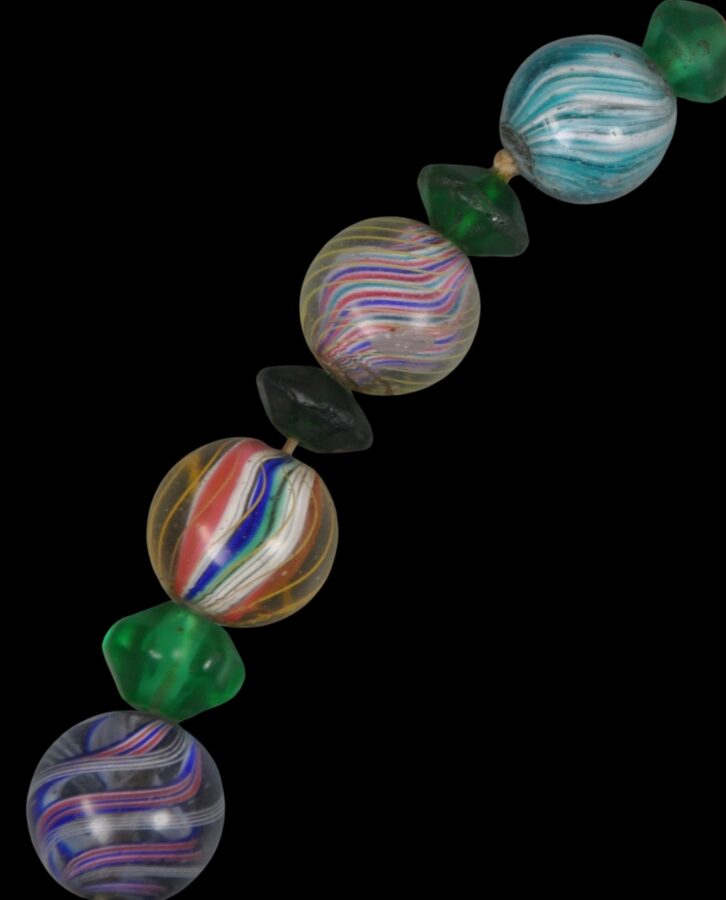Enquiry about object: 9825
Rare, Fine German Striped Alley or Marble Bead Necklace
Lauscha, Central Germany, for the export market, including Africa circa 1870
overal length: 58.2cm, diameter of the largest bead: 3.4cm, weight: 346g
Provenance
private collection, Canada. The collection was carefully assembled over the last 50 years.
The large, marble-like beads of this spectacular and rare strand were produced in Germany around 1870. Known as striped alley or Lauscha beads after the town in which they were produced, the beads feature swirling patterns produced using the latticino technique in which coloured rods of grass are drawn through clear glass.
The strand comprises 15 graduated Lauscha beads and 16 spacer beads.
The set is extremely rare – individual beads are rare – so to have a complete, graduated set in excellent condition is particularly rare.
The large, marble-like beads are arranged with small bicone green Uranium glass bead spacers, which were made in Venice from the 1920s.
Lauscha beads were popular among certain tribes in West Africa (such as the Yoruba of Nigeria) though were not produced specifically for the African market.
Lauscha beads are nearly always broken or chipped. The larger examples were difficult and costly to make too and were known to often explode during the production process.
Lauscha is in the central German state of Thuringia. It has long been known for its glassblowing and into the 20th century became known for its production of glass Christmas tree decorations such as baubles. Today, it is home to a glass museum, and was also the setting for the novel The Glassblower.
A strand of such German beads is illustrated in Liu (1995, p. 48) with the observation that they were ‘very expensive’ in Africa, and that the beads shown most probably were from Nigeria but originally ‘probably’ had been made in Germany – seemingly, these beads are so so rare that scholarship on them at the time of publication was still imprecise.
The strand here is in excellent condition for its age, and as mentioned is particularly rare.
References
Liu, R.K., A Universal Aesthetic: Collectible Beads, Ornament, Inc, 1995.


